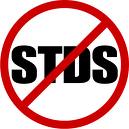 Federal regulators say some companies are selling products that make unproven claims to treat sexually transmitted diseases—claims that could pose a threat to public health. The Food and Drug Administration (FDA) says only prescription medicines and diagnostic tools available through a health care professional are effective for STD diagnosis and treatment. FDA and the Federal Trade Commission (FTC) are warning manufacturers and distributors that they could face legal action if the products aren’t removed from the market. The agencies say at least 15 products claim to treat, prevent, or cure STDs and are being sold online and at some retail outlets.
Federal regulators say some companies are selling products that make unproven claims to treat sexually transmitted diseases—claims that could pose a threat to public health. The Food and Drug Administration (FDA) says only prescription medicines and diagnostic tools available through a health care professional are effective for STD diagnosis and treatment. FDA and the Federal Trade Commission (FTC) are warning manufacturers and distributors that they could face legal action if the products aren’t removed from the market. The agencies say at least 15 products claim to treat, prevent, or cure STDs and are being sold online and at some retail outlets.
The products—some of which are sold as dietary supplements—claim to treat a range of sexually transmitted diseases, including herpes, chlamydia, genital warts, HIV, and AIDS. Specific brand names being targeted by FDA and FTC include: Medavir, Herpaflor, and Viruxo. To see a complete list of the phony STD remedies, go to this SITE.
FDA’s Dr. Debbie Birnkrant says she’s concerned that someone with an STD will waste precious time using a product that doesn’t work, leading to a delay in medical treatment and possible spread of the infection. “If you aren’t treating your STD with an FDA-approved medication, you’re not just putting your own health at risk—you could be endangering your partner,” she says.
Prescription Only
Birnkrant says there are no non-prescription drugs or dietary supplements that can treat, cure, or prevent sexually transmitted disease. Condoms are the only non-prescription product that can prevent STDs by reducing the chance that an infected person will pass on the disease. STDs can only be diagnosed and treated under the supervision of a health care professional. Some STDs have symptoms that include sores or a discharge, but the majority of infected people have no symptoms at all. Because of this, Birnkrant says people who are sexually active, have had unprotected sex, or have been exposed to a sexually transmitted disease should get medical attention, especially if they have these symptoms:
• burning sensation with urination
• pelvic pain
• discharge from the penis or vagina
• blisters
• sores
There are FDA-approved medications available to treat many sexually transmitted diseases. These products have met federal standards for safety, effectiveness, and quality—and they’re available only by prescription, Birnkrant says. To learn more about sexually transmitted diseases and to learn where you can be tested, go to www.hivtest.org/STDTesting.aspx.
 Know the facts! GYT: Get Yourself Tested
Know the facts! GYT: Get Yourself Tested
 Happy first day of spring! That’s right; even though we are still experiencing sub-zero temperatures in many parts of the country (Chicago weather today is brutal!), it is technically now spring. With spring, comes spring vacation and thoughts of warm weather and spending time at the beach. This month, women and men across the country will shed their parkas and start getting bathing suit ready. For many, this involves a certain amount of grooming, with respect to body hair. Before you get out your razor, clippers or wax, though, we wanted to give you a head’s up on an article, published in the upcoming issue of the journal
Happy first day of spring! That’s right; even though we are still experiencing sub-zero temperatures in many parts of the country (Chicago weather today is brutal!), it is technically now spring. With spring, comes spring vacation and thoughts of warm weather and spending time at the beach. This month, women and men across the country will shed their parkas and start getting bathing suit ready. For many, this involves a certain amount of grooming, with respect to body hair. Before you get out your razor, clippers or wax, though, we wanted to give you a head’s up on an article, published in the upcoming issue of the journal  Just 38 percent of sexually active young women were screened for chlamydia in the previous year in the United States, according to the US Centers for Disease Control and Prevention. CDC recommends annual screening for all sexually active women aged 25 and under. If recent policies related to health care reform that focus on preventive care are cut, this problem could become worse.
Just 38 percent of sexually active young women were screened for chlamydia in the previous year in the United States, according to the US Centers for Disease Control and Prevention. CDC recommends annual screening for all sexually active women aged 25 and under. If recent policies related to health care reform that focus on preventive care are cut, this problem could become worse. Just 38 percent of sexually active young women were screened for
Just 38 percent of sexually active young women were screened for  Federal regulators say some companies are selling products that make unproven claims to treat sexually transmitted diseases—claims that could pose a threat to public health. The Food and Drug Administration (FDA) says only prescription medicines and diagnostic tools available through a health care professional are effective for STD diagnosis and treatment. FDA and the Federal Trade Commission (FTC) are warning manufacturers and distributors that they could face legal action if the products aren’t removed from the market. The agencies say at least 15 products claim to treat, prevent, or cure STDs and are being sold online and at some retail outlets.
Federal regulators say some companies are selling products that make unproven claims to treat sexually transmitted diseases—claims that could pose a threat to public health. The Food and Drug Administration (FDA) says only prescription medicines and diagnostic tools available through a health care professional are effective for STD diagnosis and treatment. FDA and the Federal Trade Commission (FTC) are warning manufacturers and distributors that they could face legal action if the products aren’t removed from the market. The agencies say at least 15 products claim to treat, prevent, or cure STDs and are being sold online and at some retail outlets.